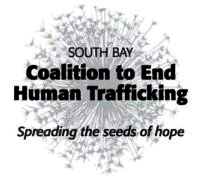
PDF Guide
Abridged Guide for Survivors on Hope-Based and Solutions-Oriented Journalism about Human Trafficking
Premise: Journalism aims to contribute to society by providing audiences with information to help make informed decisions about their lives, communities, and government. But some journalism on human trafficking (HT) has been damaging to survivors and efforts to combat HT. For this and other reasons, many survivors are wary of talking with journalists. Several guides have been published for survivors on how to handle interview requests from journalists, but they tend to position survivors in a defensive stance. This resource complements those, centering survivors’ ability to help influence public perceptions of HT by catalyzing hope-based and solutions-oriented journalism that advances efforts to combat HT.
HT survivors can help catalyze hope-based and solutions-oriented journalism through:
Understanding the aims and constraints of journalists
- Journalism is a public service profession, and many journalists entered that profession to make a positive difference in the world. Media dynamics pressure journalists into producing sensationalist stories.
- Credible journalists aim to act ethically according to these principles:
- Seek truth and report it
- Minimize harm
- Act independently
- Be accountable and transparent
- However, at times ethical principles are in tension with each other. Examples of tensions between principles include:
- Journalists are trained to ask for details as part of their quest for truth. In order to minimize harm they should also respect boundaries that survivors articulate.
- It is typical for journalists not to show their stories to interviewees before publication because that’s a way for journalists to maintain their independence. But journalists must also be transparent, and thus should be willing to share which quotes they plan to use from an interview.
- Journalists working for different types of news organizations may have different approaches to interviewing, writing, audio recording, and photography. When being approached for an interview, ask whether the article is for print, television, radio, and/or social media and whether audio or visuals will be included.
Asserting basic rights and maintaining personal boundaries in interactions with journalists
- Survivors own their stories and have the right to determine what they share about their past, to whom, and for what purposes.
- Survivors have no obligation to agree to any journalist’s request for an interview, and may end an interview at any point.
- When asked for an interview, to help you decide whether you will agree, first search online for other news reports by that reporter and for other stories on HT published by the news outlet they work for. Then ask the reporter:
- Why they want to report on HT
- How they found you
- Why they think you are a good source for an interview
- What they want to learn from you
- Whether they are interested in hearing what you think is important for the public to know about HT
- What their deadline is, i.e. how soon their report needs to be completed
- If you agree to be interviewed, ask the journalist:
- What kinds of questions will I be asked?
- Who else are you interviewing?
- How might your news report help counter HT?
- Tell the journalist in advance and again at the start of the interview if you want the journalist to use a pseudonym rather than your name, distort your voice in any audio-recording, or not have your face photographed or video-recorded.
- State upfront any topics that you are not willing to discuss, and any wording preferences, e.g. “Please do not use [a term] in reference to me” or “I want to be referred to as a survivor rather than as a victim.”
- If you are asked a question you do not want to answer, or feel you can’t answer, state that with a reply such as “Good question, but I’m not an expert on that,” “I’m not comfortable talking about that,” or “I’d like to move on to a different topic.”
- The journalist will assume anything you say during the interview can be quoted in the news report, unless you explicitly state that something you’re about to say must be off record, and clarify whether you mean not to be quoted, not to be paraphrased, or not to be referenced in any way. An interviewee who is speaking “on the record” cannot take something back, but can ask for a comment to be expunged, clarify what you meant to say, and/or ask the reporter to consider quoting you in a different way, even after the interview is over.
- If a published news report you contributed to includes a mixup or error, contact the reporter and/or their editor to request a clarification or correction.
Inspiring journalists to be hope-based and solutions-oriented in their reporting
- How a societal problem is reported by journalists can have negative or positive effects.
- When survivors consent to interviews, you have a chance to help guide the journalist’s focus and frame, shape the narrative, and thereby influence the public’s understanding of and attitudes toward HT.
- Write out for yourself in advance of an interview the key points that you want to make to shape the news report, and note for yourself the specific parts of your story that you are and are not willing to share.
- Tell the journalist about your overarching reason(s) for doing the interview, e.g. “As a survivor, I want others to know that…”
Authorship, copyright, and citation
This guide was authored by Kirsten Foot, Deborah Pembrook, Sharan Dhanoa, and Nicole Dahmen, with contributions from the South Bay Coalition to End Human Trafficking Survivor Advisory Council, Perla Flores, Celina Rodriguez, Vanessa Sequeira-Garza, Ruth Silver Taube, Meg Spratt, and Morgan Weibel. This guide is part of the The Toolkit for Hope-Based and Solutions-Oriented Journalism About Human Trafficking. This work is licensed under a Creative Commons Attribution-NonCommercial-ShareAlike 4.0 International License.
To cite this guide:
Kirsten Foot, Deborah Pembrook, Sharan Dhanoa, Nicole Dahmen, South Bay Coalition to End Human Trafficking Survivor Advisory Council, Perla Flores, Celina Rodriguez, Vanessa Sequeira-Garza, Ruth Silver Taube, Meg Spratt, and Morgan Weibel, (2022). “Abridged Guide for Survivors on Hope-Based and Solutions-Oriented Journalism about Human Trafficking”. In The Toolkit for Hope-Based and Solutions-Oriented Journalism About Human Trafficking, produced by Kirsten Foot, Sharan Dhanoa, Nicole Dahmen, and Deborah Pembrook. https://hopebased.info/abridged-survivor
To cite the Toolkit:
Kirsten Foot, Sharan Dhanoa, Nicole Dahmen, and Deborah Pembrook, (2022). The Toolkit for Hope-Based and Solutions-Oriented Journalism About Human Trafficking. https://hopebased.info




